How ‘Wednesday’ Brought Tim Burton to TV
- Oops!Something went wrong.Please try again later.
- Oops!Something went wrong.Please try again later.
- Oops!Something went wrong.Please try again later.
- Oops!Something went wrong.Please try again later.
- Oops!Something went wrong.Please try again later.
- Oops!Something went wrong.Please try again later.
- Oops!Something went wrong.Please try again later.

Wednesday showrunners Alfred Gough and Miles Millar remember vividly the unusual circumstances of their first conversation with Tim Burton. The filmmaker, who they hoped they could convince to join their show, was piping in from a garden full of “life-size” dinosaur models at his U.K. home. “He was wandering around his dinosaur garden talking to us on FaceTime about his love of Wednesday Addams, and the idea that the script spoke to him in terms of being the ultimate outsider,” remembers Millar of this virtual meeting in 2020 with Burton. Just a week before, the duo were doubtful Burton would even meet with them. They had already written the entire season with the help of a pandemic-era virtual writers room, but wanted Burton’s expertise and special touches. “We were told by everyone, ‘Tim’s never done television. We don’t even know if he’ll read it,’ ” recalls Gough. But four days after sending the scripts to Burton’s agent, they got the call. The filmmaker wanted to meet.
Burton is known for crafting outsiders, from Beetlejuice‘s Lydia Deetz to Edward Scissorhands. So Wednesday felt like a natural fit. “It really resonated with his high school experience,” notes Gough, who along with Millar secured Burton for his first episodic project — the eight-installment first season from MGM Television debuted Nov. 23 on Netflix — with the filmmaker serving as director of the first four episodes and series executive producer.
More from The Hollywood Reporter
Guest Essay: How 'George & Tammy' Captured My Parents as Human Beings First, Musical Icons Second
'Hocus Pocus 2' Delivered "Cosmic Costume Design" With Magical Flourishes
'Fire Island' Director Says Film Shoot "Was Like Gay Summer Camp"
Wednesday Addams is, of course, the death-obsessed daughter in the The Addams Family, which was created by cartoonist Charles Addams and first published by The New Yorker in the 1930s. Adaptations of the story of this macabre family include the classic sitcom that ran for two seasons during the ’60s as well as live-action and animated movies.
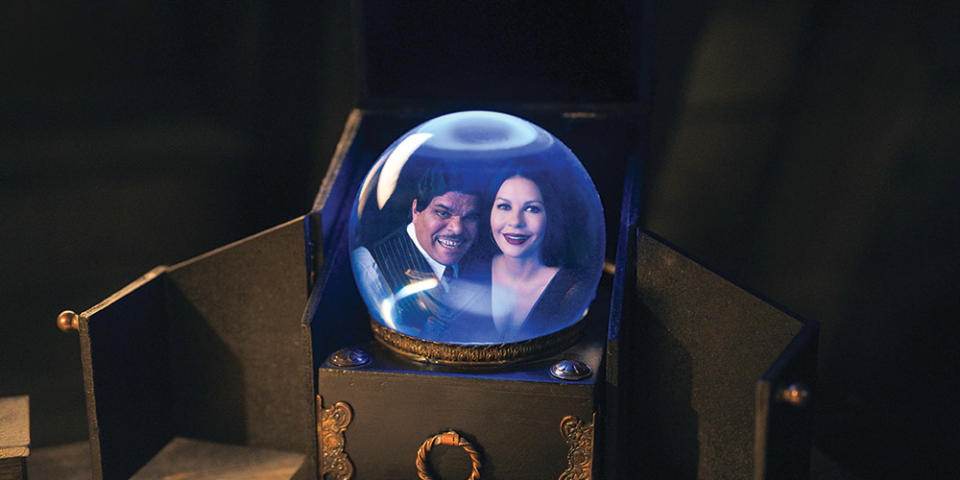
Gough and Millar are perhaps best known for the TV series Smallville, which ran for 10 seasons from 2001 to 2011, and which told the story of a young Clark Kent before he became known as Superman. The series was something of a touchstone as they conceived Wednesday, which the duo did after completing their shows The Shannara Chronicles and Into the Badlands, turning their focus toward exploring a new side of a well-known character. As fans of the original Addams Family show (thanks to reruns) and the ’90s movies, they were intrigued by Wednesday. “We wanted to do a period of her life that hadn’t been done before, a little bit like we did with Smallville, which is to take a chapter that nobody’s ever seen,” says Gough.
After a wide casting search, a pitch-perfect Jenna Ortega was enlisted for the role of Wednesday, who becomes embroiled in a mystery when she is transferred to a New England boarding school called Nevermore Academy, a sort of Hogwarts for outcasts such as werewolves, vampires and sirens. Nevermore is also her parents’ alma mater, and she’s reluctant to attend and tries to flee during the first episode.
The series brings back the memorable members of the Addams family, including Morticia (Catherine Zeta-Jones), Gomez (Luis Guzmán) and the dismembered hand, Thing. New characters include Principal Weems (Gwendoline Christie), Wednesday’s roommate, Enid Sinclair (Emma Myers), and “normie” teacher Marilyn Thornhill, played by Christina Ricci (who portrayed Wednesday Addams in the pair of Barry Sonnenfeld-directed Addams Family movies in the early ’90s).
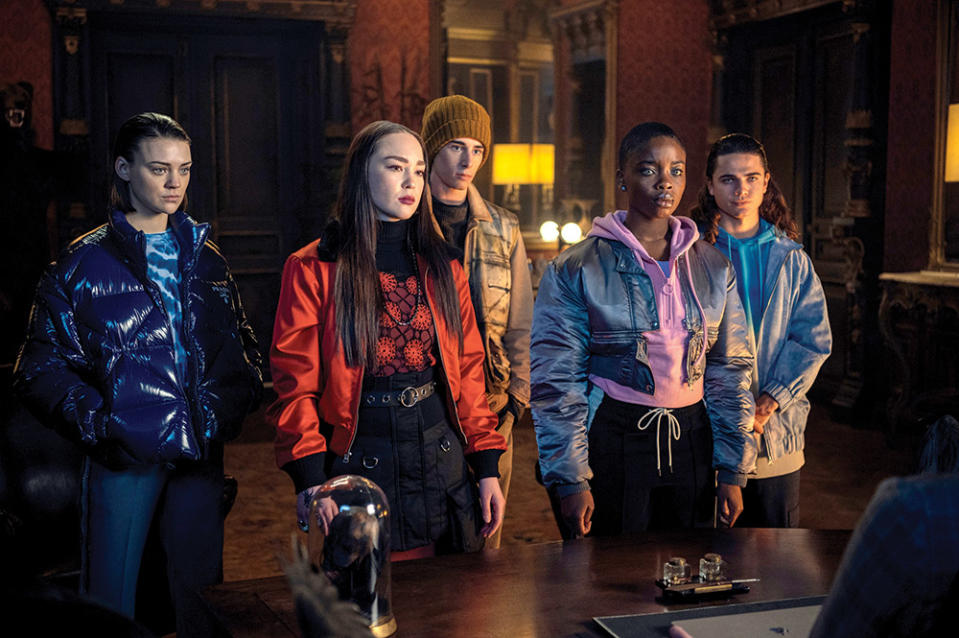
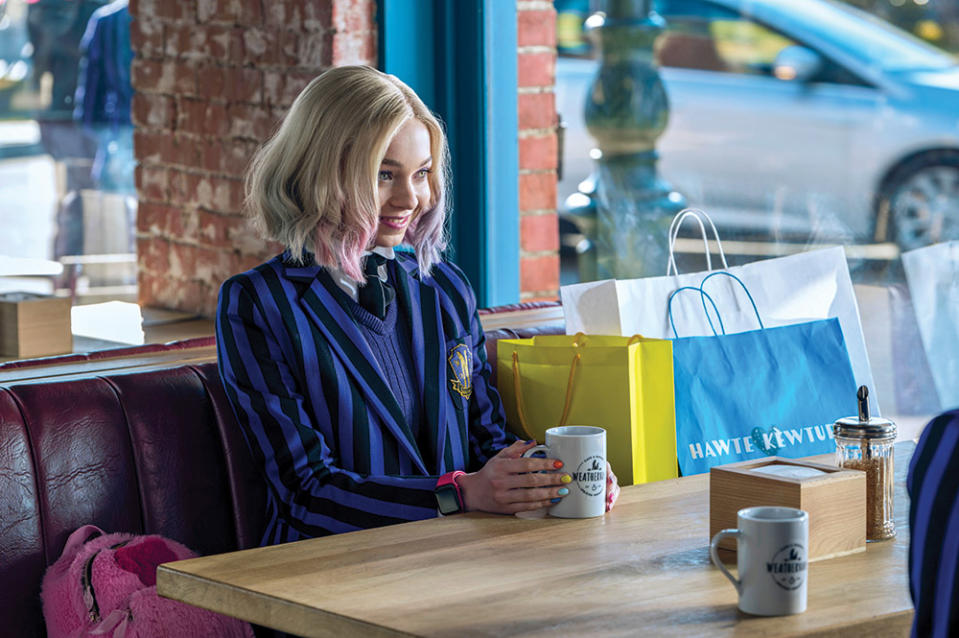
In creating the visual style — an Addams Family feel that has the distinct imprint of Burton — the team went back to Charles Addams’ drawings for inspiration, rather than film or TV adaptations of his work.
“The cartoons are very spare in their illustrative style, which suits Tim’s aesthetic quite well. He likes things very minimal and specific rather than broad and cluttered,” says production designer Mark Scruton, who had worked with Burton on 2016’s Miss Peregrine’s Home for Peculiar Children.
Filming took place in Romania, where Scruton found ornate architecture for location work, including Cantacuzino Castle in the Carpathian Mountains, which was used for the exterior of Nevermore, as well as ample soundstages for built sets, including Wednesday’s attic dorm room, which she shares with bubbly, color-loving Enid. This room is split down the middle, giving everything, including a round stained-glass window, a Technicolor look on Enid’s half of the room while Wednesday’s half is in stark black and white.
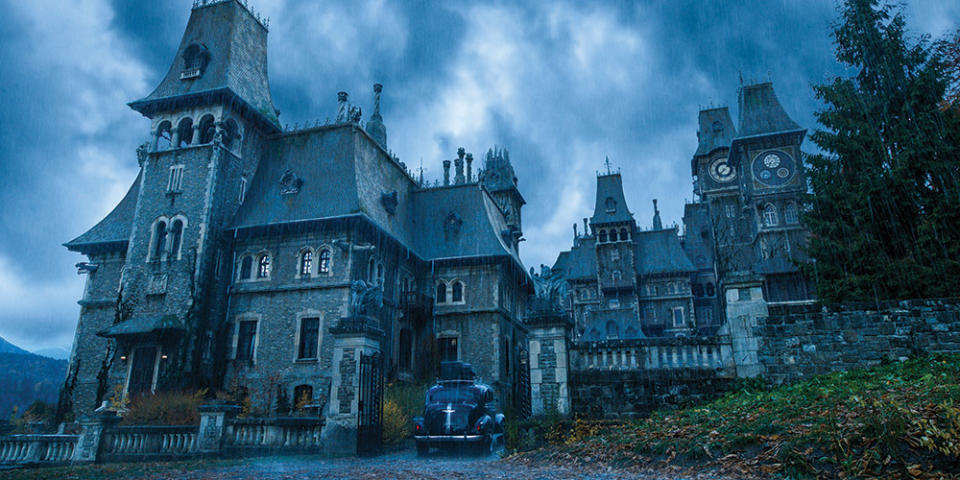
“Dorm rooms are normally quite small, but we needed somewhere that was going to last eight episodes and [support] all sorts of different events. So we had to come up with a bigger space that had smaller elements to it,” says Scruton, who also gave the room a balcony where Wednesday goes to play her cello after dark.
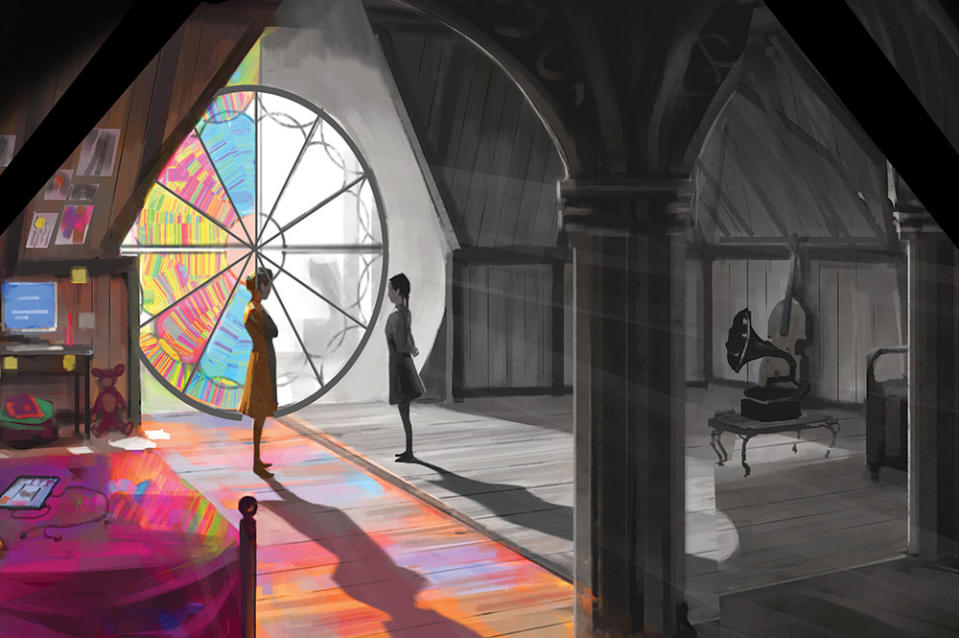
For those looking for nods to Burton, the Weathervane Cafe in Nevermore’s nearby town of Jericho has weathervanes on the wall with Burton-esque elements from his films or illustrations.
For the episodes he directed, Burton enlisted some of his longtime collaborators, among them Oscar-winning costume designer Colleen Atwood (incidentally, her grandfather knew Charles Addams), whose work included putting Ortega in a black-and-gray bespoke version of the Nevermore uniform.
He also reunited with composer Danny Elfman, who scored the main title music and the four episodes directed by Burton. For the project, Elfman leaned into Johann Sebastian Bach for inspiration. “I wanted it to sound somewhat classical, but also a little darker and more aggressive in its tone,” he says, adding that he used cello — the instrument that Wednesday plays during the season — as well as drums, guitar and organ. “For my own pleasure, I wanted to use harpsichord just as an homage to the original,” Elfman adds.
![Danny Elfman’s score includes cello, which Wednesday plays in the series. For the score, Elfman largely opted to move away from the classic 1960s show. “Like with anything with Tim [Burton], when we’re doing something that comes from something else, he doesn’t want to lean on it,” says Elfman.](https://s.yimg.com/ny/api/res/1.2/ygRr_gtkjuZfPw27mkYZcg--/YXBwaWQ9aGlnaGxhbmRlcjt3PTk2MDtoPTYzOA--/https://media.zenfs.com/en/the_hollywood_reporter_217/2364a26fe22cf0f1142deade0c0bc2af)
Of the recognizable 1960s Addams Family series theme song from composer Vic Mizzy, he notes that “like with anything with Tim, when we’re doing something that comes from something else, he doesn’t want to lean on it.” But Elfman says that a familiar da-da-da-da at the end of a bar gave him a way to drop a simple homage to Mizzy into the score. “Tonally I liked the idea of using the harpsichord, and that wasn’t so much as a melodic homage to the theme, but just more as an instrument of a sound that connected us to the past.”
All of this proved an irresistibly fresh approach to Charles Addams’ classic work. The series was an instant hit on Netflix, propelling Ortega’s career, while Wednesday’s moves to ’80s alternative rock song “Goo Goo Muck” by The Cramps during episode four’s Rave’N Dance became a viral sensation. Ortega herself is said to have created her commanding dance, an amalgamation of styles including elements of Bob Fosse choreography and hints of moves from Lisa Loring, who played Wednesday in the ’60s series.
At the dance, Ortega wore a memorable black dress with a vintage look that was unmistakably Wednesday. Atwood discovered the dress at London boutique Azzedine Alaïa. “One day Colleen called me from London saying, ‘I found this dress; it’s the most perfect dress!’ ” recalls co-costume designer Mark Sutherland. “It had a contemporary but also a really vintage feel to it.” The fabric was light, giving Ortega the ability to perform those now-signature dance moves. But there was only one such dress available, so after purchasing it, the team tracked down the fabric used to make it and crafted three additional dresses for filming. “There were so many layers on it; it was made from this amazing fabric. It was as light as a feather,” says Sutherland.
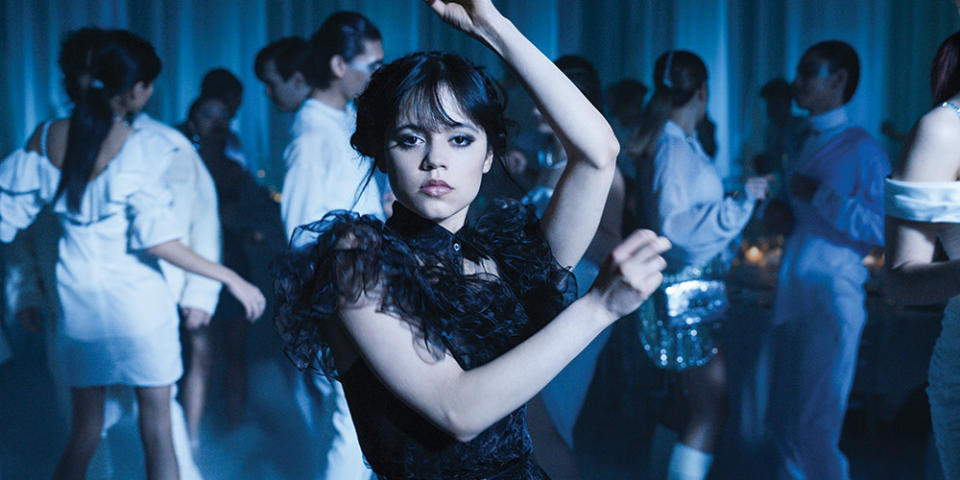
“When I saw the neckline, I think it became quite apparent that we definitely needed to put her hair up so we could see this incredible dress,” says hair and makeup designer Tara McDonald. To complete the look, she put Wednesday’s iconic braids on top of her head and used more makeup to give her smokier eyes. She also added lashes and lip gloss.
Dressed in black, Wednesday stands out from the mostly white and pale blue palette of the dance, which was decorated as a sort of frozen wonderland, complete with a Yeti ice sculpture.
The weather became a challenge for this episode, which was filmed on a freezing day in February. Initially, the sequence where Wednesday comes down the stairs and looks in on the dance for the first time was going to be shot outside, on the quad. But the team agreed that shooting a dialogue-heavy scene wasn’t doable if their lead was shivering. “The day before, we pivoted that whole sequence to the interior and I dressed it to look like it was another entrance into the dance,” says Scruton.
For the production designer, the biggest challenge was that the dance concludes with a Carrie-like moment — blood-red paint had been put in the sprinkler system and rains down on the students.
“It was envisioned that [the environment for the dance] would be a location because it would be far too expensive to build a space that big that fit the Nevermore aesthetic,” Scruton says. The only problem? No location would permit the production to spray red paint all over it. So the team figured out how to create their own space on one of the stages.
“It became much more based on lights and drapes and icicles and creating a world that was slightly more ethereal,” says Scruton. “It gave us this great canvas to spray with the red. The icicles, all the table decoration, all the frosted elements — everything — was custom-made to be destroyed just once. It was the equivalent of blowing it up, basically.”
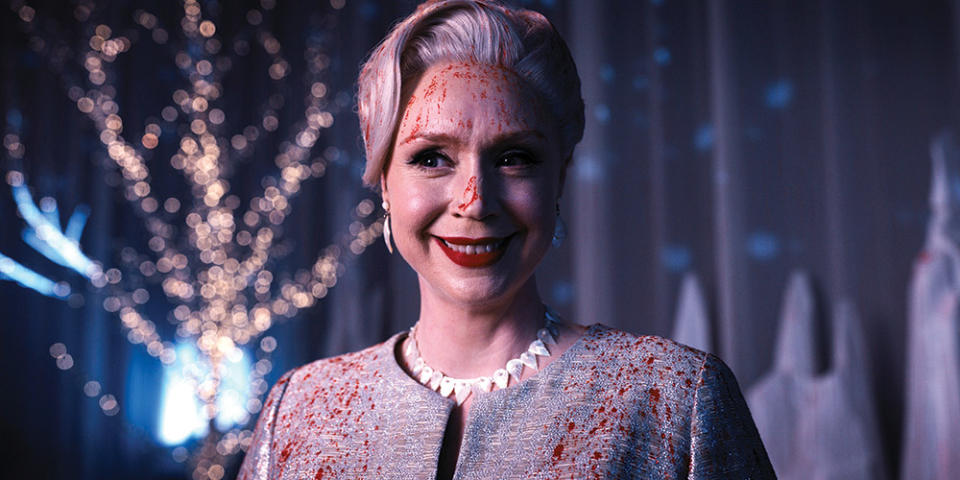
Then came another challenge: getting the blood color just right, so it would look good when splattered on the characters’ costumes.
“We tried several things where we had people in costume, we dumped the blood on them, and they’d gone bright pink. All these sort of things that hadn’t quite worked,” Scruton says. “Eventually we hit the magic formula.”
As the fateful day to film the sequence arrived, the special effects team rigged the ceiling so that the blood would pour down. The set was built on top of a tank to allow the liquid to drain and not flood the stage.
On the day of filming, the pressure was high, because the team would have just one take to capture the effect.
“If take one hadn’t worked, it would have been ‘Come back in three weeks while we rebuilt everything,’ ” says Scruton. “It was the most stressful day, I think, on that entire job. I don’t think I sat down the whole day; I just paced up and down.”
In the end, it all worked out. Additionally, the dance itself amassed a massive 55 million views on Netflix’s YouTube page and became a phenomenon on TikTok.
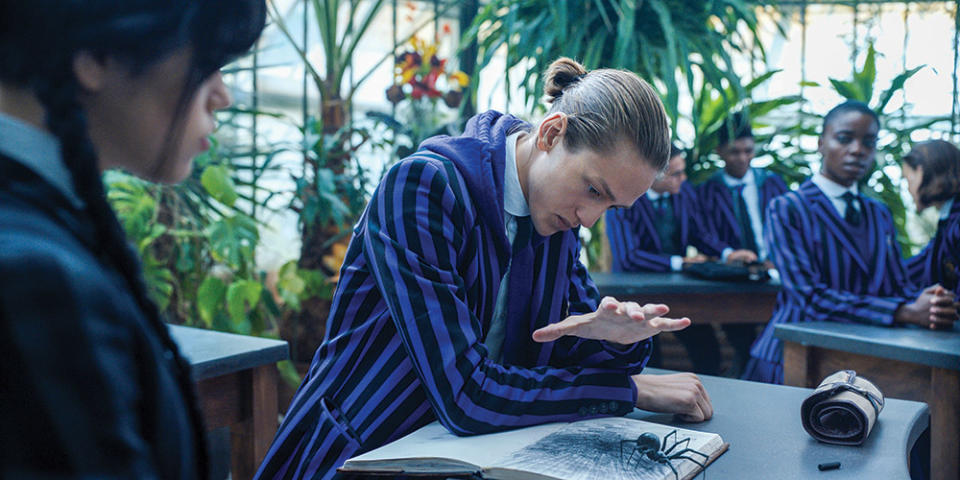
Netflix is eager for more from the series, and has ordered a second season. Little has been revealed about the next season at this stage, but there are hints. Season one concludes as Wednesday solves the mystery surrounding the school and the monster that has been attacking normies and students during the school year. Burton himself designed the wide-eyed werewolf-like creature at its center.
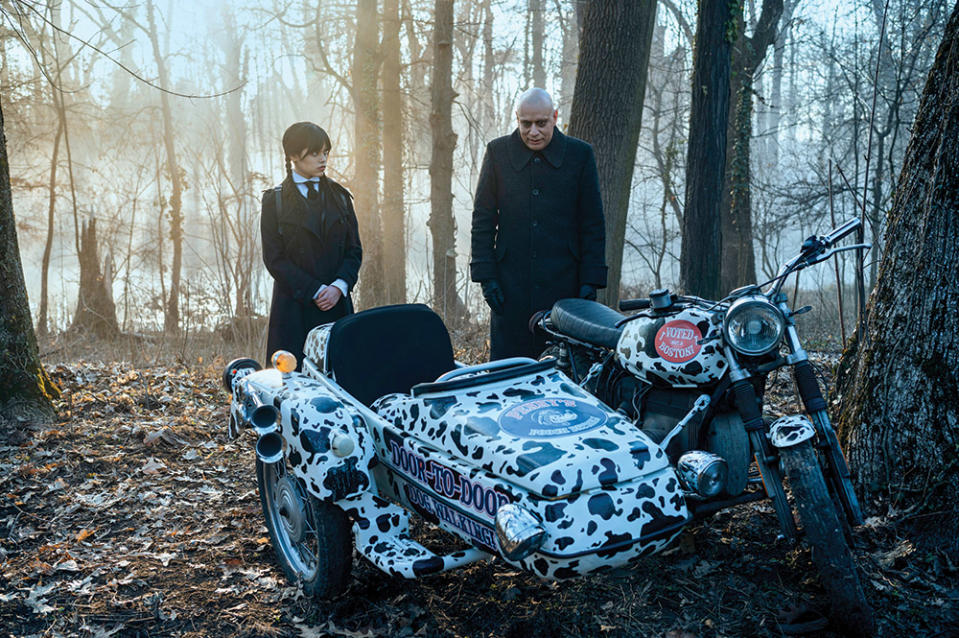
And Wednesday — whose name, as explained in the pilot, comes from a line in Morticia’s favorite poem, “Wednesday’s child is full of woe” — finds that in contrast to the first episode, when she tried to flee Nevermore, she has come to like her new school.
Three years after their first meeting with Burton, Gough and Millar are still in business with the filmmaker, who tapped them to write the script for his new movie Beetlejuice 2, which is now filming. It stars Ortega (who will play Lydia Deetz’s daughter) and involves numerous Burton collaborators, including Atwood and Scruton.
And they stand ready to further explore what Wednesday, a character created in the 1930s, has to say about the 2020s. Says Gough: “She’s completely timeless and of the moment.”
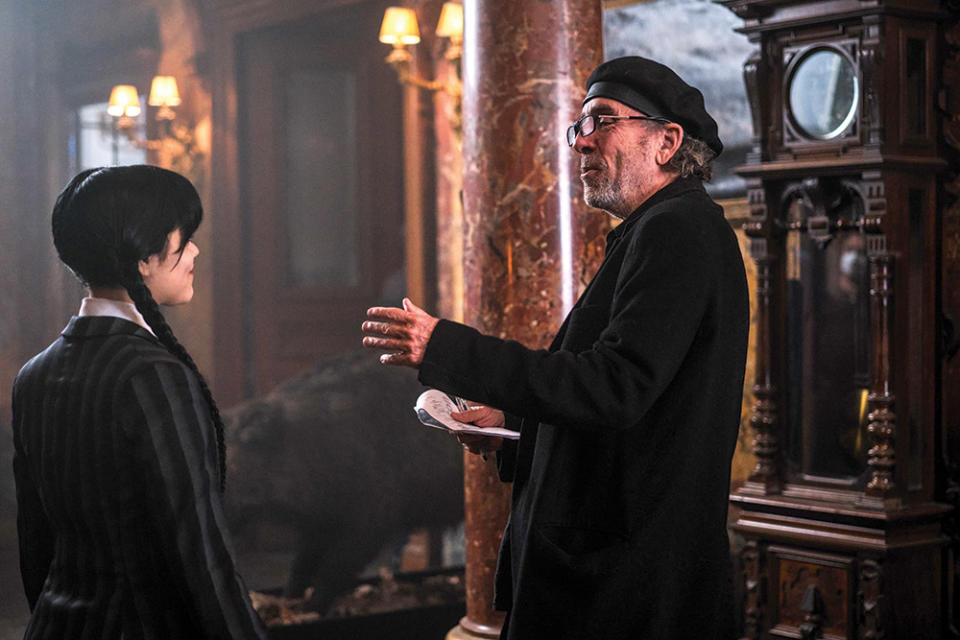
This story first appeared in a June stand-alone issue of The Hollywood Reporter magazine. To receive the magazine, click here to subscribe.
Best of The Hollywood Reporter
From 'Fuller House' to 'And Just Like That': 30 Shows That Prove TV Reboot Culture Is Alive and Well
"This Was One Hot Mess": Lisa Vanderpump, Keke Palmer and the THR Reality Roundtable
Tom Holland Breaks Free: Talking Zendaya, ‘The Crowded Room’ and the Future of Spider-Man

